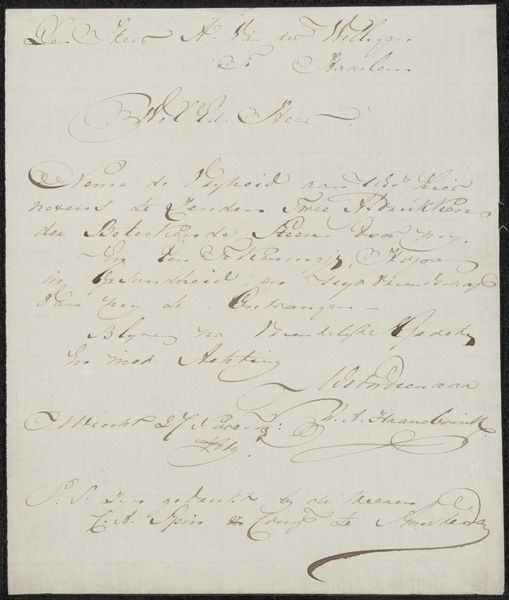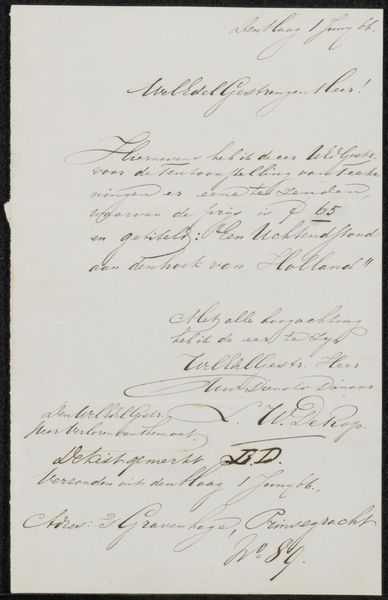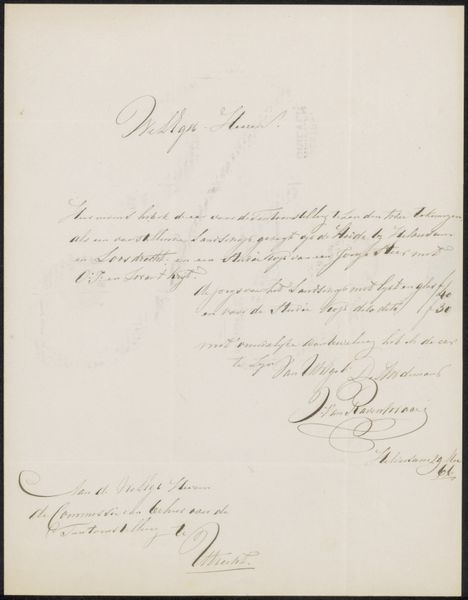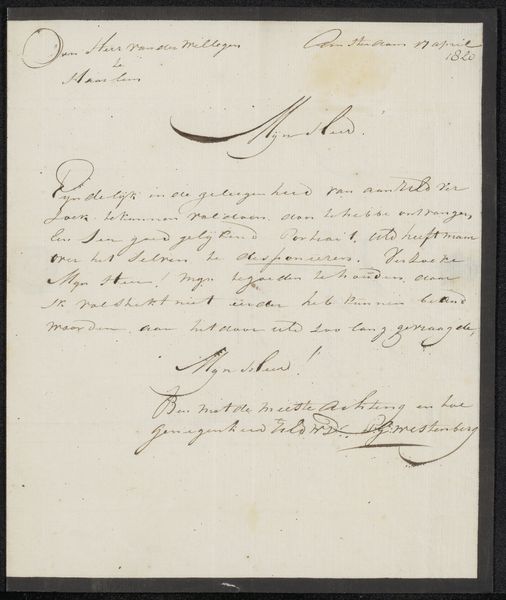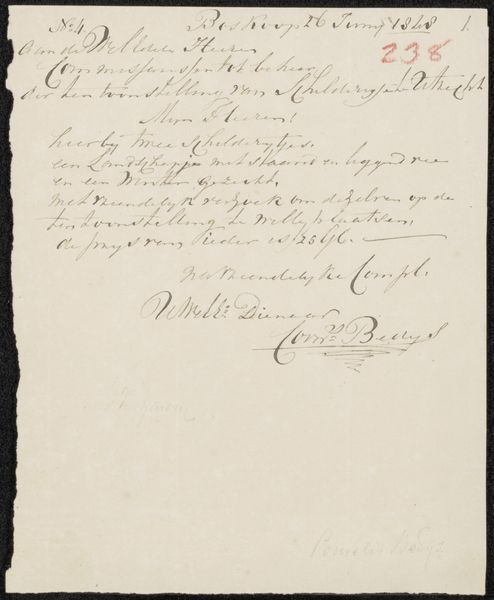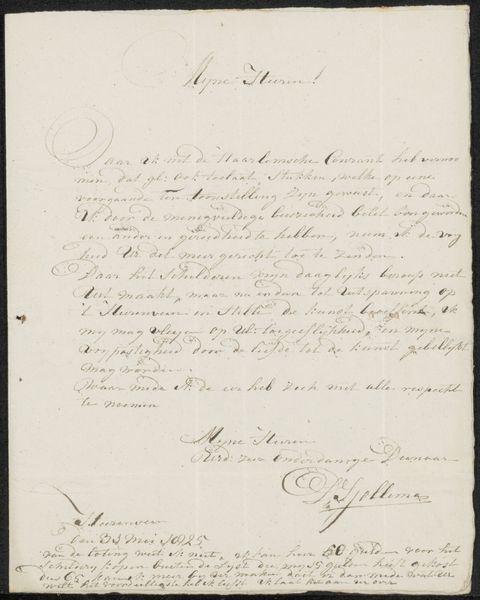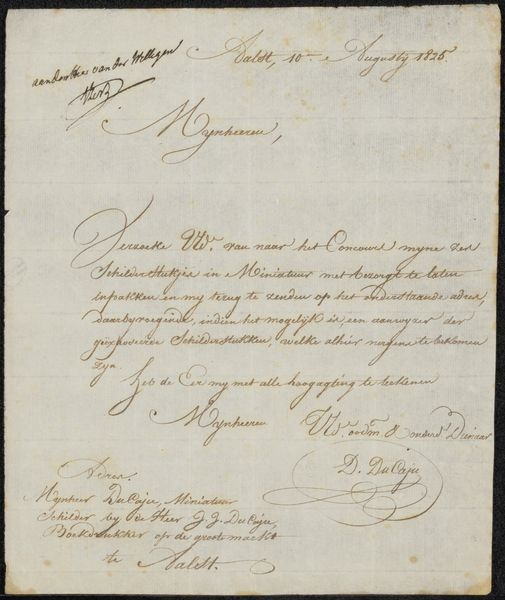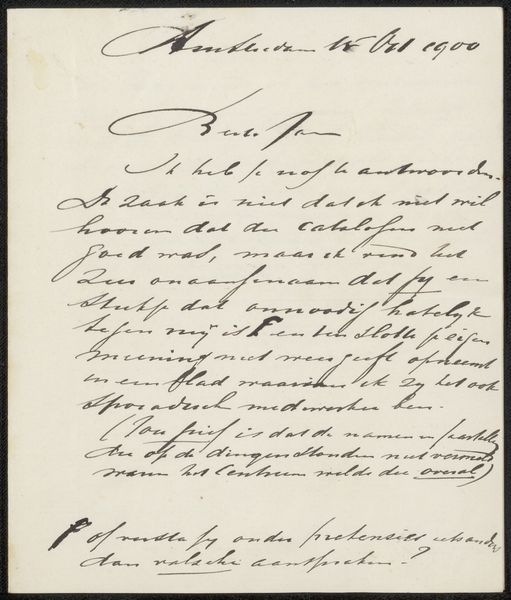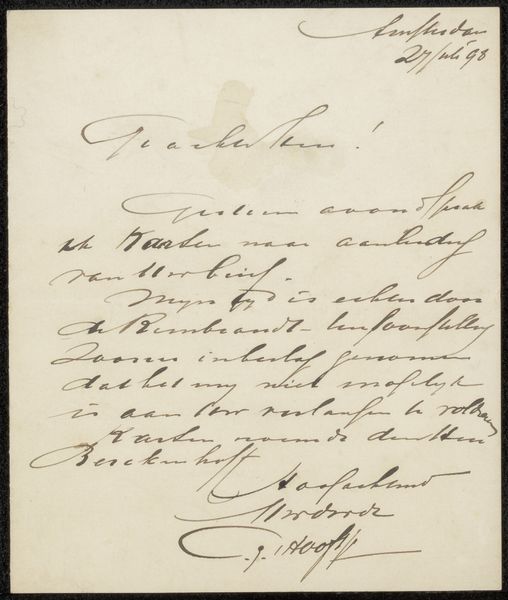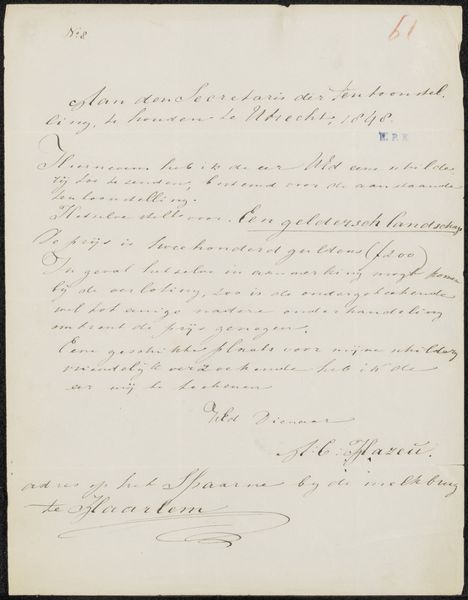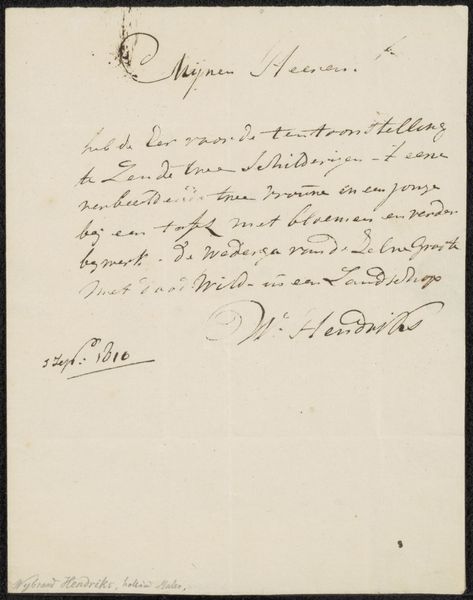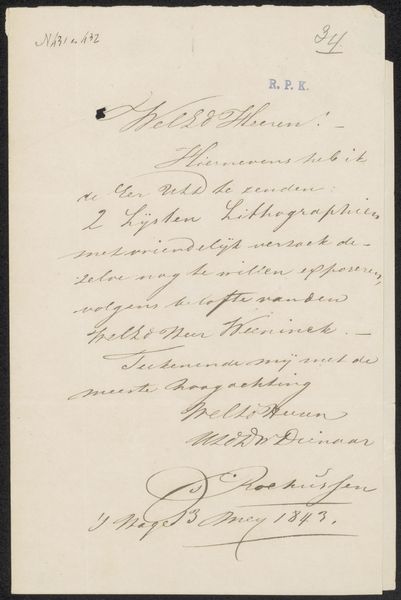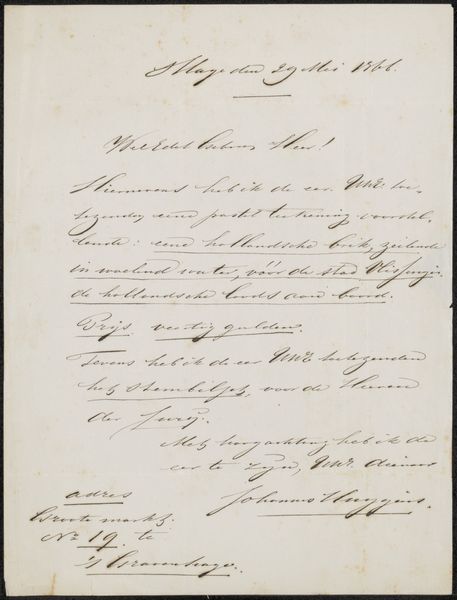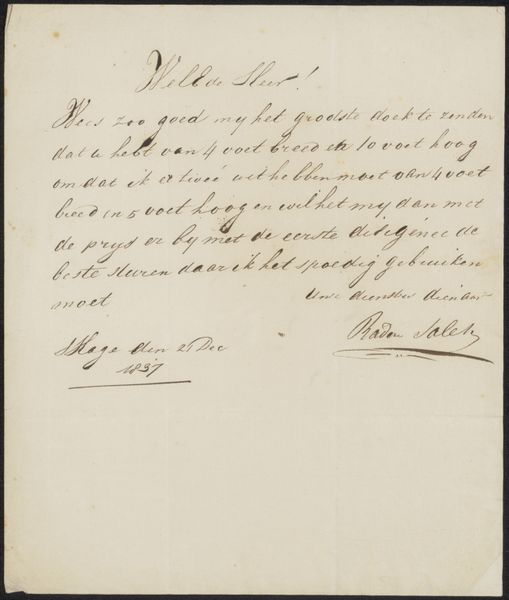
Brief aan de Commissie van de Tentoonstelling van Levende Meesters in Amsterdam Possibly 1840 - 1849
0:00
0:00
drawing, paper, ink, pen
#
drawing
#
hand-lettering
#
sketch book
#
hand drawn type
#
hand lettering
#
paper
#
personal sketchbook
#
ink
#
ink drawing experimentation
#
romanticism
#
pen-ink sketch
#
pen work
#
sketchbook drawing
#
pen
#
sketchbook art
#
calligraphy
Copyright: Rijks Museum: Open Domain
Editor: So, here we have P. van Borselen's "Brief aan de Commissie van de Tentoonstelling van Levende Meesters in Amsterdam," potentially from the 1840s. It’s ink on paper, a letter, really. The script itself strikes me as very formal, almost like a performance of handwriting. What stands out to you in this piece? Curator: It's a fascinating glimpse into the communication styles of the time. Look at the flourishes, the deliberate loops and curves. This isn't just conveying information; it's crafting an image, isn’t it? Handwriting was deeply personal. It communicated social standing, education, even character. Editor: That’s true; it’s hard to imagine a rejection letter being penned like this today! The artistry gives it an almost decorative quality. Was calligraphy commonly seen as an art form then? Curator: Absolutely. Calligraphy carried tremendous weight. Think about illuminated manuscripts or even official documents. The act of writing became a ritual, a performance imbued with meaning. Even the choice of ink, the pressure applied to the pen, all contributed to the message being conveyed. How do you think the intended recipient might have perceived this letter, beyond its literal content? Editor: Knowing it was handwritten makes me wonder about the relationship between the artist and the commission. There is a certain elegance here, hinting at respect or perhaps a desire to impress. I see hand lettering mentioned as a key component of the piece. Curator: Exactly! Every stroke was considered. By delving into the symbolism of script, we learn a lot about interpersonal dynamics, social hierarchies, and aesthetic values that underpinned that era. This makes the object very valuable, even as an artifact of visual culture. Editor: It’s amazing to consider how much cultural information can be embedded in something as seemingly simple as a handwritten letter. Curator: Precisely. This piece urges us to move beyond the literal, seeing handwriting as a deliberate encoding of meaning, reflective of its time and the person wielding the pen.
Comments
No comments
Be the first to comment and join the conversation on the ultimate creative platform.
